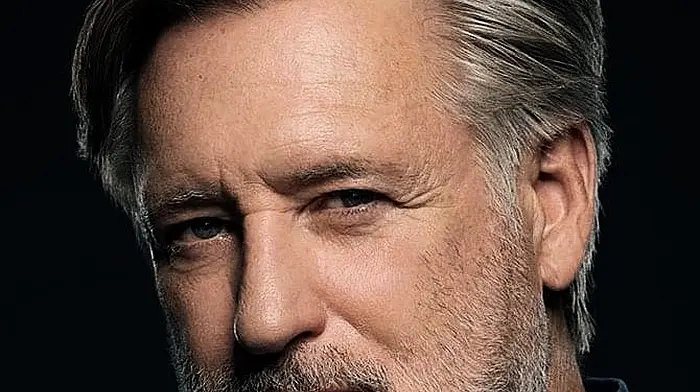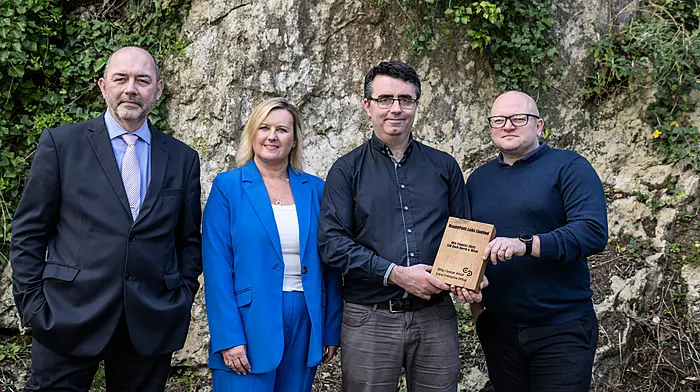The government’s ‘Our Rural Future’ plan was launched this week, but if broadband remains poor or non-existent in remote areas, it’s just not going to work, says Harry McGee
FOR donkey’s years now, when you mention the word ‘broadband hub’ to a minister, you can be as sure as night follows day they will utter the following word: Ludgate.
Skibbereen’s amazing hub has shown what can be done in terms of reimagining a rural town in Ireland.
But, as always, the policy and politicians have been lagging behind and are only now coming around to following its lead.
On Monday, four senior government figures launched ‘Our Rural Future’, the latest five-year development policy for rural Ireland.
It is an impressive tome of 120 pages, with 150 different actions to revive rural Ireland and arrest generations of depopulation and decline in the Irish countryside.
This is one of the areas that Covid-19 has made a little easier.
Now it’s a five-year plan or strategy which means there is a lot of very lofty rhetoric, but not a huge amount of details, especially when it comes to splashing the cash.
Like a lot of these plans, it is mainly an amalgam of existing policies and Programme for Government commitments, with some new promises and aspirations.
So the plan is to have 400 hubs around the country where people can work remotely with super-fast broadband. Without the pandemic that shift to remote working would have taken many years.
It would have met some of the same resistance as Charlie McCreevy’s ill-fated decentralisation plan back in 2003.
But the pandemic made it a reality now. And a lot of employees – and more importantly loads of employers – realised it had potential, especially for those doing so-called back-end functions (ie staring into a computer screen all day!)
Yes there are 150 actions. But there are no targets, no measurements, no metrics, no budgets and no costings. So they want a heap of people to move to, and stay, in rural Ireland. But they have no idea how many.
They want to give people incentives to move to rural Ireland through grants and taxes. But how much they will be is anybody’s guess. The nearest Heather Humphreys came to saying it was when she spoke of the state of Georgia in the US offering grants of $2,000 to people to relocate there from Silicon Valley.
The only specific figure relates to the long-term budget of €1bn for the rural regeneration and development fund.
A lot of that money will be spent on revitalising town centres in rural Ireland. That is a good idea. They would prefer retail and commercial activities to happen in town and village centres rather than see new development on the outskirts. The preference also is that people who are settling in rural Ireland do so near town and village centres, not in once-off houses.
Everything of course depends on broadband. It’s grand in Dublin which has fast broadband.
There will be a lot of people in Dublin who will work from home a few days a week.
That will certainly ease congestion in the city and also put a big question mark over the massive quarter with high-rise offices that has grown up (and is still growing) on either side of the River Liffey near Dublin docks.
Beyond that, there will be a certain percentage of people who came from rural Ireland and want to return to their home place, or else just live somewhere that’s not a city.
Most of them will retain the jobs that they had in Dublin, but it will be different.
Their work week will be ‘blended’, split between a day or two in the office and the rest of the time working from home.
The ‘office’ may mean a commute into Dublin a few times a month, or a trip to the local hub, where they can meet colleagues for meetings, or just work in an office-type environment.
If broadband remains poor or non-existent, you can forget about it from the off.
It’s not going to work. For remote working, you need the kind of connectivity that you have when you meet a person face-to-face. Otherwise, it becomes a non-starter.
So if the strategy works, it can be transformational.
Both the Minister for Communications Eamon Ryan and Tánaiste Leo Varadkar described it as the most important change for rural Ireland since the decades-long electrification scheme which brought electric power to every home in the State.
So besides the hubs, it wants 20% of the public service working remotely by the end of this year.
There is also an eye-catching plan to use rural pubs as hubs during the day.
Many pubs in rural areas are shut during the day. On the face of it, this has potential.
But to work from a pub it has to have a lot of light and a lot of desk-space and a lot less Sky Sport being broadcast from the corner.
This might work for some pubs, but there are lots of people who would find it hard to do a day’s work from a tavern, even a dry one.
Still, it’s an idea. And ideas are what are needed to revive rural Ireland. Leo Varadkar spoke about the population of rural Ireland increasing, but only in the places where people commute to the big urban areas. Elsewhere, there has been decline for generations, through lack of investment and opportunity, and through lack of facilities.
So the plan needs all the good things. It will need that new law that will give employees the right to request to work from home.
It needs grants and tax breaks for people who want to work from home.
It needs the new focus on green energy, and on activity tourism, such as greenways and adventure sports.
But, mostly, it needs broadband.
The good news is that the National Broadband Plan is up and running. The not-so-good news is that progress has been slow. The spadework has been mostly done, Eamon Ryan said on Monday. That means almost 200,000 homes surveyed and 290 broadband connections points installed throughout the State.
But they are only beginning to actually connect homes. Ryan accepted it was a slow process.
Only 70,000 homes will be connected by the end of the year, although he says it will accelerate after that.
The plan has a seven-year timespan although Ryan is saying he hopes it can be expedited. But it does mean that there are people in rural Ireland who won’t get the chance to work from home for a few years yet because they don’t have the bandwidth.
The 400-hub element – which forms the centrepiece of the plan – is very doable.
The Western Development Commission (WDS) did research in the past few years which showed that 114 hubs of one kind or another had sprung up (organically in most cases) along the western seaboard, from Cork to Donegal.
There are amazing high-speed ‘G-teic’ facilities already up and running in Gaeltacht areas.
NUIG also did a survey last year which showed that 7% of people had already moved to rural Ireland.
The WDC estimates that, overall, up to 15% of those who have worked in Dublin and other major cities will relocate to rural Ireland to work remotely.
If that does happen, it will be a gamechanger. But the rural development plan and its 150 actions will be worthless unless broadband
becomes a reality everywhere.
• Harry McGee is political
correspondent with The Irish Times and on Twitter
@harrymcgee







